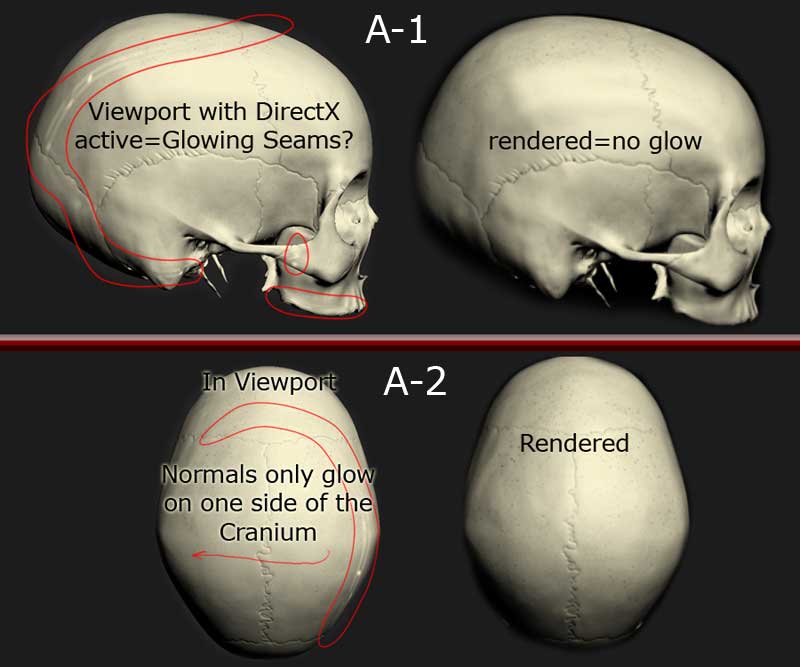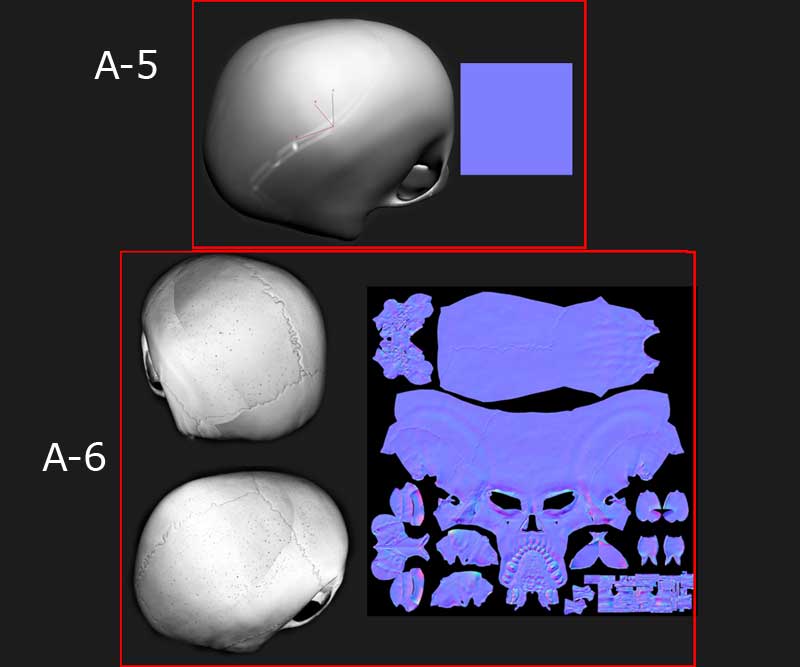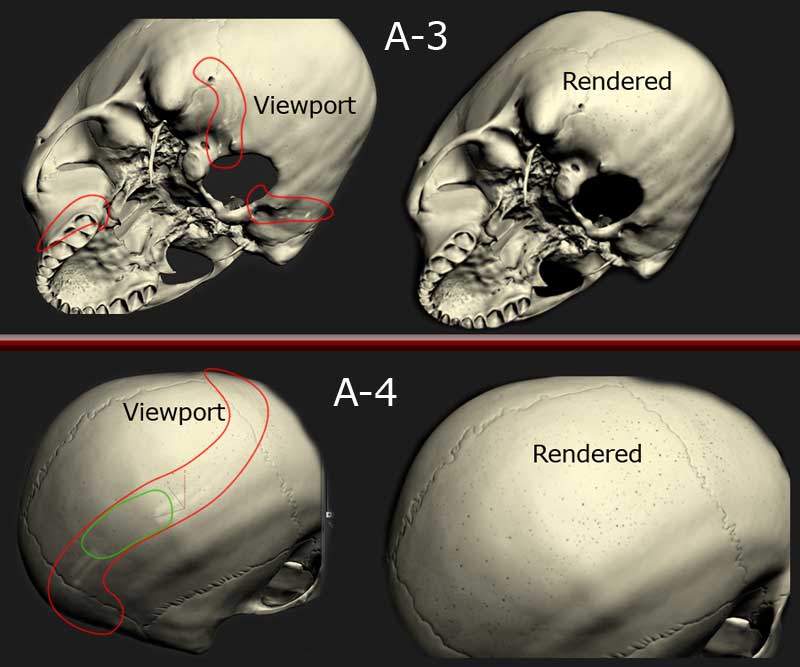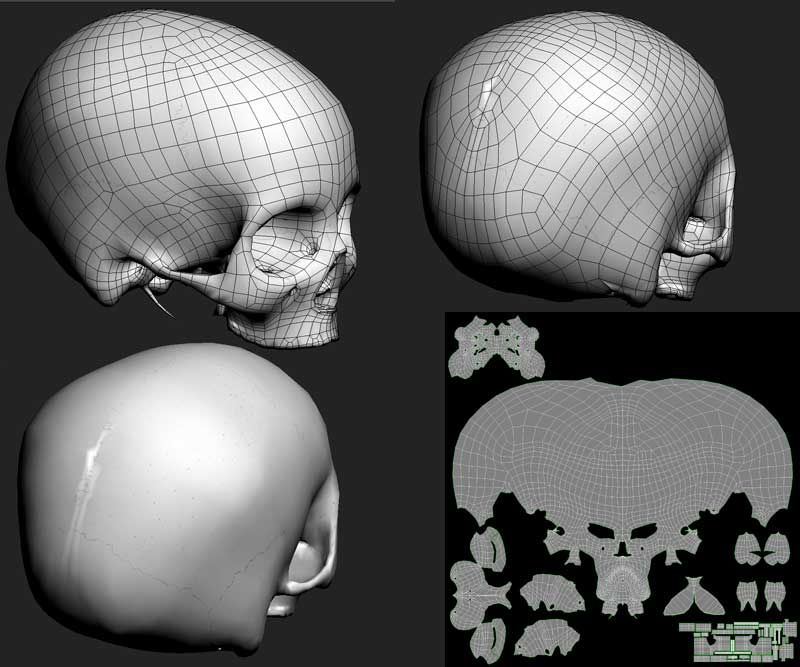I was wondering if anyone would have any useful information that might help me overcome my realtime normal rendering issue.
My theory is- the top of the skull has a different orientation than the rest of the skull therefore creating a problem where the normals fight for the proper direction creating a glowing seam.
As a test I took a neutral normal tone (125,125,255) and applied it to the model and the same glowing seams occurred (A-5). Can this problem be fixed? Any help on this subject would be greatly appreciated.
[ ]
]
Attachments


 ](javascript:zb_insimg(‘113868’,‘NormProb07.jpg’,1,0))
](javascript:zb_insimg(‘113868’,‘NormProb07.jpg’,1,0))